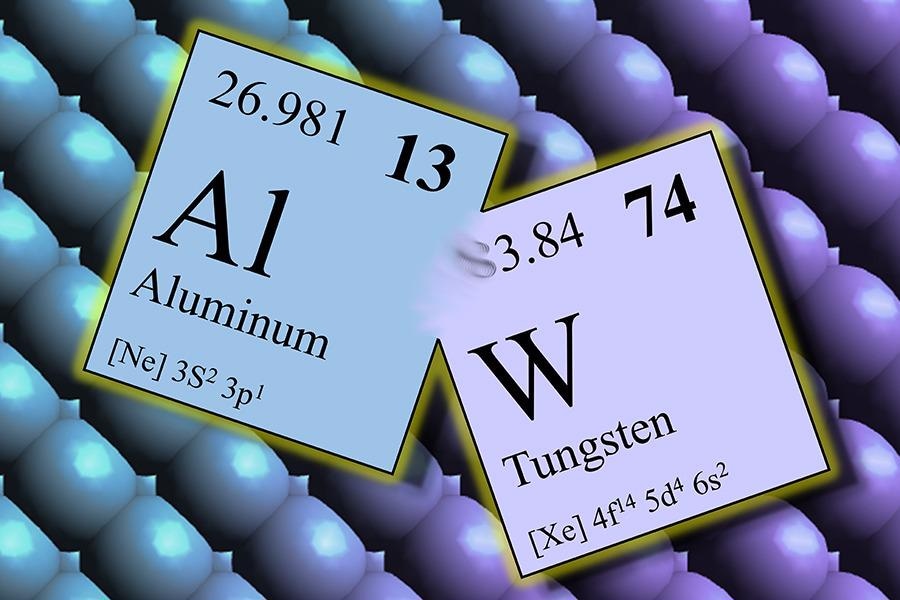Reviewed by Alex SmithMay 10 2022
A group of energy researchers headed by the University of Minnesota Twin Cities has developed a game-changing device that electronically transforms one metal into behaving like another, allowing it to be used as a catalyst to accelerate chemical reactions.
 University of Minnesota researchers have invented a “catalytic condenser” that opens the door for new catalytic technologies using non-precious metal catalysts for important applications such as storing renewable energy, making renewable fuels, and manufacturing sustainable materials. Image Credit: Dauenhauer Group, University of Minnesota.
University of Minnesota researchers have invented a “catalytic condenser” that opens the door for new catalytic technologies using non-precious metal catalysts for important applications such as storing renewable energy, making renewable fuels, and manufacturing sustainable materials. Image Credit: Dauenhauer Group, University of Minnesota.
The constructed device, known as a “catalytic condenser,” is the first to show that electronic modification of alternative materials offering new properties can result in quicker, more effective chemical processing.
The invention paves the way for new non-precious metal catalyst-based catalytic technologies for significant applications like storing renewable energy, producing renewable fuels, and creating sustainable materials.
The study was published in the JACS Au journal, the American Chemical Society’s renowned open access journal, and was identified as an Editor’s Choice publication. The group has a provisional patent on the device and is working with the University of Minnesota Office of Technology Commercialization.
For the past century, chemical processing has depended on the use of specific materials to encourage the production of chemicals and materials that are used in everyday life. The precious metals platinum, ruthenium, rhodium, and palladium, for example, have unique electronic surface properties. They are important for regulating chemical reactions because they can behave as both metals and metal oxides.
The public at large is likely to be familiar with this concept in relation to an increase in catalytic converter thefts on cars. The rhodium and palladium contained within catalytic converters make them valuable. Palladium is often more expensive than gold.
These costly materials are often limited in supply and have become a huge obstacle to technological advancement.
The scientists used their understanding of how electrons behave at surfaces to establish this technique for tuning the catalytic properties of alternative materials. The researchers proved that adding and removing electrons from one material could transform it into a metal oxide with properties similar to another.
Atoms really do not want to change their number of electrons, but we invented the catalytic condenser device that allows us to tune the number of electrons at the surface of the catalyst. This opens up an entirely new opportunity for controlling chemistry and making abundant materials act like precious materials.
Paul Dauenhauer, MacArthur Fellow and Professor, Chemical Engineering and Materials Science, University of Minnesota
Dauenhauer, who also holds the Lanny and Charlotte Schmidt Endowed Chair, headed the research team.
The catalytic condenser device moves and stabilizes electrons at the catalyst’s surface using a combination of nanometer films. This design uses a novel mechanism that combines metals and metal oxides with graphene to facilitate fast electron flow on tunable chemistry surfaces.
Using various thin film technologies, we combined a nano-scale film of alumina made from low-cost abundant aluminum metal with graphene, which we were then able to tune to take on the properties of other materials. The substantial ability to tune the catalytic and electronic properties of the catalyst exceeded our expectations.
Tzia Ming Onn, Post-Doctoral Researcher, University of Minnesota
Tzia Ming Onn developed and analyzed the catalytic condensers.
The catalytic condenser is a versatile platform device that can be used in a variety of manufacturing applications. This versatility stems from the active surface layer’s nanometer fabrication, which includes graphene as an enabling component.
The device’s ability to stabilize electrons (or the absence of electrons, known as “holes”) can be adjusted by changing the composition of a highly insulating internal layer. Any base catalyst material with additional additives can be incorporated into the device’s active layer, which can then be tuned to accomplish the properties of expensive catalytic materials.
We view the catalytic condenser as a platform technology that can be implemented across a host of manufacturing applications. The core design insights and novel components can be modified to almost any chemistry we can imagine.
Dan Frisbie, Professor and Head, Department of Chemical Engineering and Materials Science, University of Minnesota
Dan Frisbie was also a member of the research team.
The researchers intend to continue their work on catalytic condensers by applying them to precious metals to solve some of the world’s most pressing sustainability and environmental issues. Many parallel projects are already underway, with funding from the US Department of Energy and the National Science Foundation, to store renewable electricity as ammonia, manufacture vital molecules in renewable plastics, and clean gaseous waste streams.
The experimental invention of the catalytic condenser is part of the US Department of Energy’s larger mission, and this research was supported by grant #DE-SC0021163 from the US Department of Energy’s Basic Energy Sciences Catalysis program.
The US National Science Foundation CBET-Catalysis program (Award #1937641) and the MRSEC program DMR-2011401 offered additional funding to fabricate and characterize the catalytic condenser devices. Keith and Amy Steva also contributed financially to the research. The Characterization Facility at the University of Minnesota was used for electron microscopy research.
The study included researchers from the University of Massachusetts Amherst and the University of California, Santa Barbara.
Journal Reference:
Onn, T. M., et al. (2022) Alumina Graphene Catalytic Condenser for Programmable Solid Acids. JACS Au. doi.org/10.1021/jacsau.2c00114.